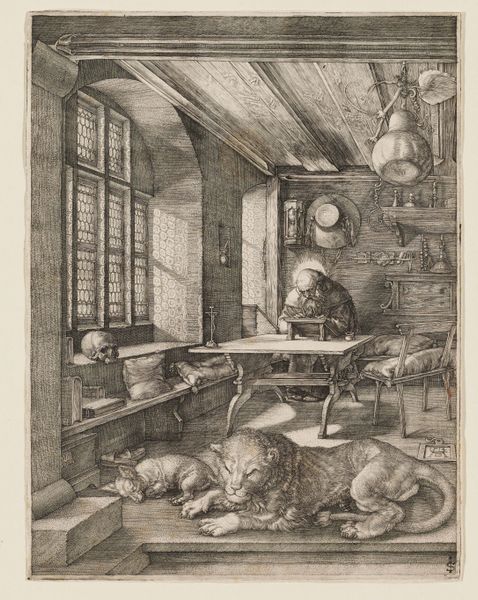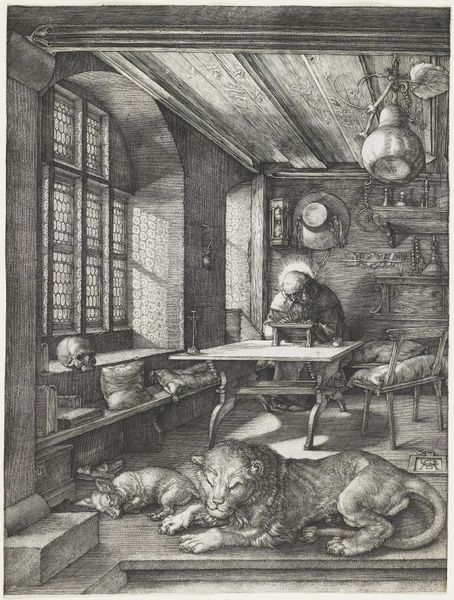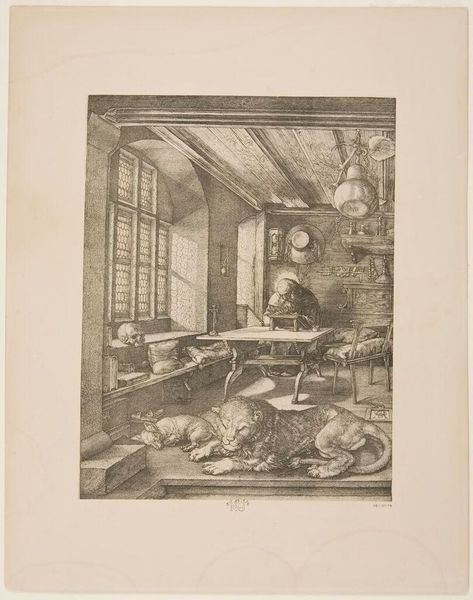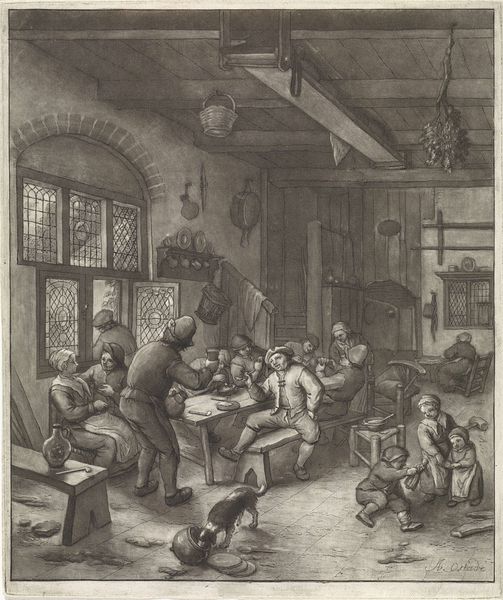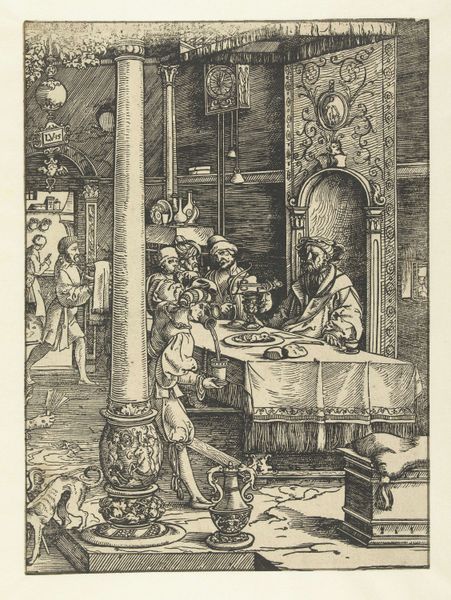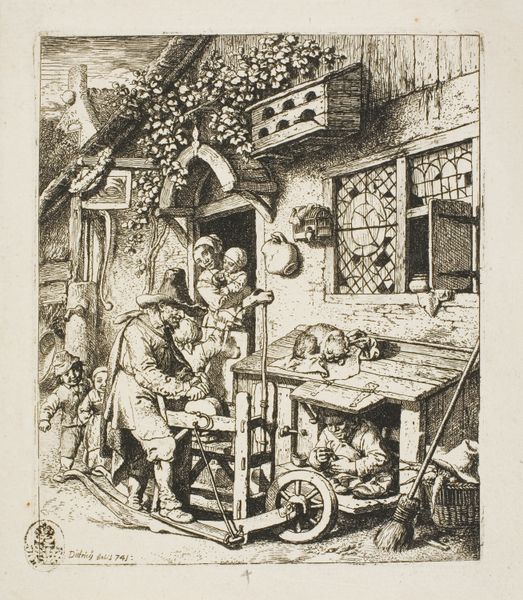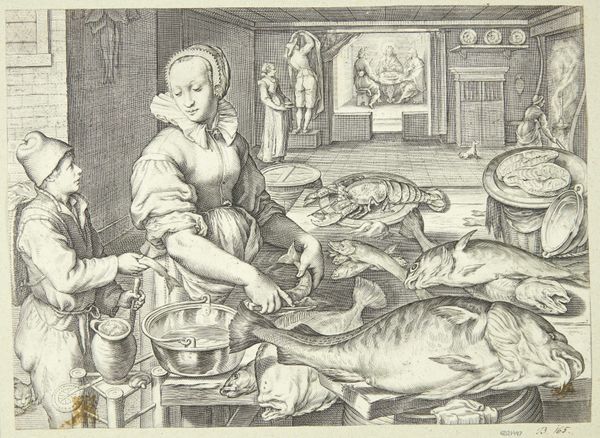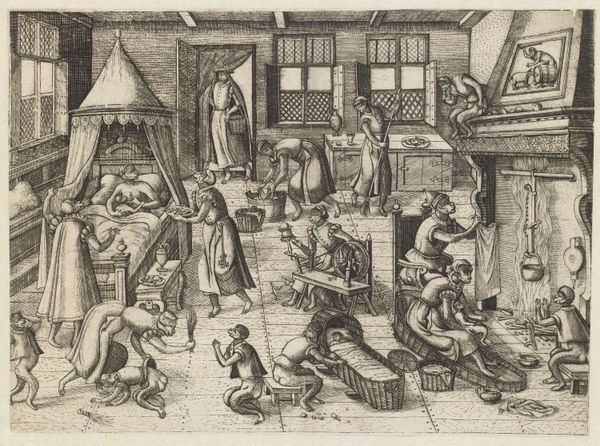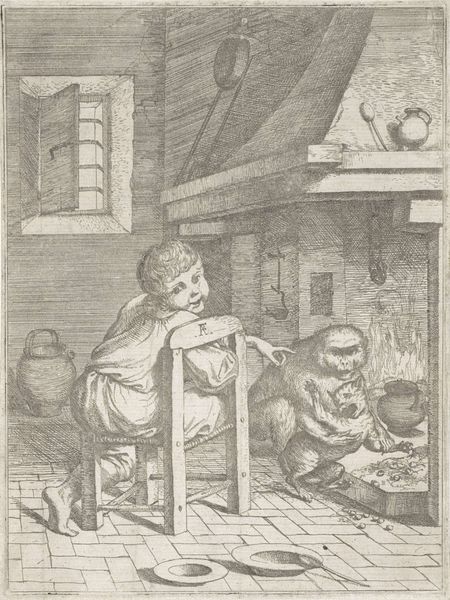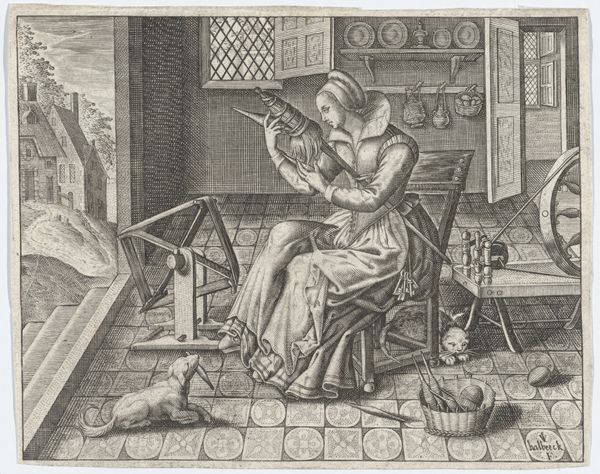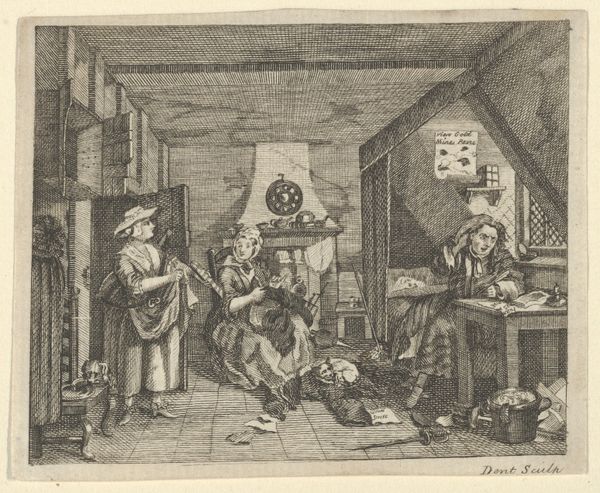
Dimensions: sheet: 9 11/16 x 7 7/16 in. (24.6 x 18.9 cm) trimmed on plate line
Copyright: Public Domain
Albrecht Dürer made this print of Saint Jerome in his study using the technique of engraving. It's an intaglio process, meaning that the image is incised into a metal plate, in this case copper, with a tool called a burin. The engraver pushes the burin through the metal, creating clean, precise lines. The depth and density of these lines determine the amount of ink held, and therefore the tonal range of the print. Look closely, and you’ll see that Dürer used hatching and cross-hatching – closely spaced parallel lines – to build up areas of shadow and volume. This was an extremely labor-intensive method, but it allowed for incredible detail. The controlled nature of engraving suited Dürer’s meticulous style. Unlike the more fluid medium of etching, engraving demanded precision and control, qualities that aligned with the Northern Renaissance emphasis on realism and detail. But it was a means of production as well, allowing Durer to disseminate his compositions widely. So, while he was a virtuoso craftsman, he was also a proto-industrialist, in a way. Hopefully, considering his process helps you appreciate the incredible skill and effort that went into creating this print.
Comments
No comments
Be the first to comment and join the conversation on the ultimate creative platform.
